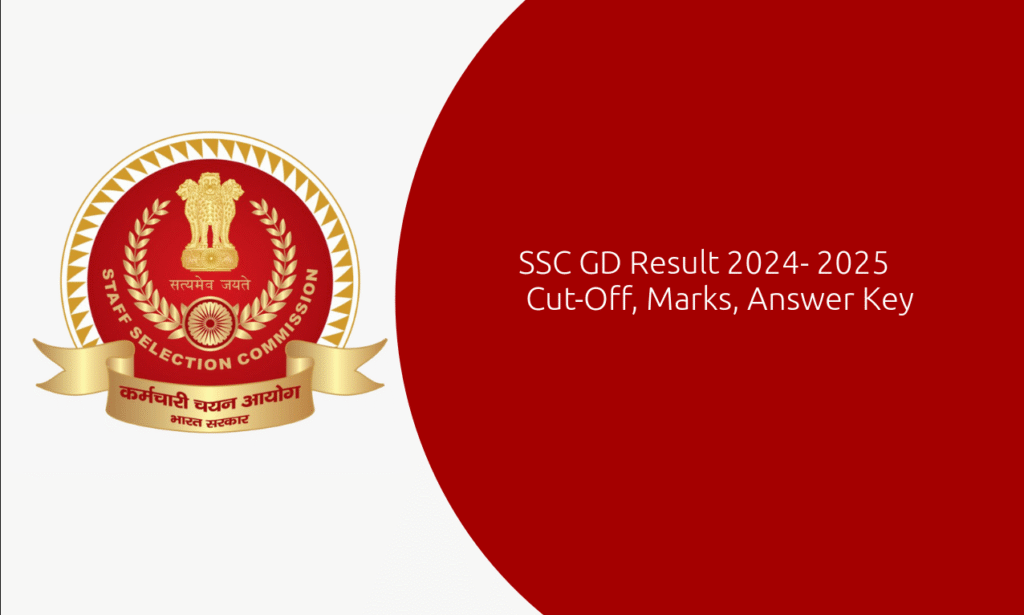The world of Indian commandos is a realm of extreme discipline, unwavering courage, and elite skill. These aren’t just soldiers; they are the specialists—the ones called upon when all other options have been exhausted. While many are familiar with the Para SF, India’s special forces landscape is a diverse and highly specialized ecosystem. Here, we delve deeper into the qualifications, age, and compensation of some of India’s most formidable commando units.
Para (Special Forces) & MARCOS: The Pillars of Military Special Ops
- Para (SF) – The Indian Army’s “Red Devils”: Known for their motto, “Men Apart, Every Man an Emperor,” the Para SF are the most famous of India’s commandos.
- Qualifications and Age: There’s no direct recruitment. You must first join the Indian Army as a soldier or an officer. The crucial step is volunteering for the Parachute Regiment, typically within your first five years of service. The selection is a brutal 90-day “probation,” with an attrition rate of over 90%.
- Salary: A Para SF commando’s salary is a combination of their army rank pay and several special allowances. A newly commissioned officer’s base pay might be around ₹56,100, but with a Special Forces Allowance (₹12,000-₹30,000), Parachute Pay (₹1,200), and other allowances for high-altitude or field areas, their total monthly earnings can rise significantly.

- MARCOS (Marine Commandos) – “The Crocodiles”: The special operations unit of the Indian Navy, nicknamed “Magarmach” (Crocodiles) for their expertise in water warfare.
- Qualifications and Age: Like the Para SF, you must first join the Indian Navy and then volunteer. The training is famously one of the toughest in the world, with a three-week “hell’s week” that tests physical and mental endurance to the limit. They undergo specialized training in everything from scuba diving and underwater demolition to counter-insurgency.

COBRA and The Black Cats: Tackling Internal Threats
- COBRA (Commando Battalion for Resolute Action): This is a specialized force of the CRPF (Central Reserve Police Force) created to combat Naxalite and Maoist insurgents. They are the “jungle warriors” of India.
- Qualifications and Age: There is no direct entry. You must first join the CRPF at any rank (Constable to Assistant Commandant) and then volunteer for COBRA. The age limit is typically 30 years.
- Training and Role: COBRA commandos undergo intensive jungle warfare and guerrilla tactics training at the CRPF’s jungle warfare schools. They are experts in camouflage, survival, and heliborne insertions into hostile areas.
- Salary: As part of the CRPF, their salary is determined by their rank, but they receive a special Hardship Allowance and other perks for their deployment in high-risk zones.

- NSG (National Security Guard) – The “Black Cats”: India’s premier counter-terrorism force, known for their swift and decisive actions during hostage crises and terror attacks.
- Qualifications and Age: The NSG is a federal force, drawing personnel from the Indian Army (Special Action Group) and the Central Armed Police Forces (Special Rangers Group). An applicant must have at least five years of police service or three years in the army, and must be under 35 years of age.
- Salary: An NSG commando’s salary is highly competitive. With a base pay based on their rank, they also receive significant allowances. Their total monthly income can range from ₹80,000 to over ₹2,00,000, factoring in Deputation Allowance, Risk & Hardship Allowance (₹25,000-₹40,000), and other benefits.

SPG (Special Protection Group): The Shield of the PM
- SPG – The Guardians of the Prime Minister: The SPG is a highly discreet and specialized unit responsible for the close-quarter protection of the Prime Minister and their immediate family.
- Qualifications and Age: Like the NSG, the SPG recruits personnel on deputation from the Indian Army and other Central Armed Police Forces. The maximum age for induction is 35 years. Candidates must be highly physically and mentally fit, and possess an impeccable service record.
- Training and Role: SPG commandos undergo some of the most rigorous training in the world, including offensive and defensive combat, surveillance, and VIP protection techniques. They are trained to anticipate and neutralize any threat to their protectee.
- Salary: The salary for an SPG commando is very lucrative, with a monthly pay scale ranging from approximately ₹84,000 to over ₹2,39,000, depending on rank. This includes a substantial Special Security Allowance and other perks that recognize the high-risk nature of their role.

The life of an Indian commando is not for the faint of heart. It is a path of extreme sacrifice and dedication, but one that is met with immense respect and a comprehensive compensation package that acknowledges their vital role in safeguarding the nation.
Creek Crocodile Commandos: The Unsung Guardians of the Rann of Kutch
The “Creek Crocodile Commandos” are not a separate, large-scale commando force, but a highly specialized unit within the Border Security Force (BSF). Their primary role is to patrol and secure the notoriously challenging creek areas of the Rann of Kutch, a vast salt marsh that forms a natural boundary between India’s Gujarat state and Pakistan’s Sindh province.

The Challenge of the Rann of Kutch
This region is one of the most difficult terrains to patrol in the world. The area is a labyrinth of tidal water channels, marshy land, and dense mangroves. The landscape constantly changes with the high and low tides, making it a treacherous environment for conventional patrolling. It is also an area of strategic importance, as the creeks can be used by terrorists or smugglers to infiltrate India from Pakistan.
Qualifications and Training
Given the unique challenges of the terrain, the selection and training for a “Creek Crocodile” are extremely rigorous and specific.
- Recruitment: These commandos are not recruited directly. They are a specialized unit of the BSF, and personnel volunteer for this unit after joining the BSF.
- Selection: The selection process focuses on skills essential for the creek environment. This includes:
- Exceptional swimming and marine diving performance.
- High endurance to work in the rough, tidal creek environment.
- Proficiency in firing weapons.
- Training: Their training is centered around a deep understanding of the Rann’s ecosystem. They learn to navigate the ever-changing waterways, survive in the harsh marshy landscape, and use specialized equipment like All-Terrain Vehicles (ATVs) that can function in both water and on land.
Role and Responsibilities
The main role of the “Creek Crocodile Commandos” is to neutralize any threat coming from the enemy line in this specific area. Their duties include:
- Patrolling: They conduct constant patrols in the creeks and on the marshy land.
- Surveillance: They are trained to monitor and detect any suspicious activity in the region.
- Counter-Infiltration: Their primary objective is to prevent illegal crossings and infiltration by terrorists or smugglers.
- Operating in All Conditions: They are trained to operate in extreme weather conditions, including the scorching heat of the summers and the treacherous high tides that can submerge the entire creek area.
Compensation and Benefits
The compensation for a BSF commando in this unit is based on their rank within the BSF. However, due to the extreme danger and hardship of their posting, they receive additional allowances.
- Base Salary: This is determined by their rank in the BSF, which falls under the Central Armed Police Forces (CAPF).
- Hardship Allowance: They receive a significant “Hardship Allowance” for their deployment in such a remote and challenging area.
- Other Allowances: They also receive standard benefits and allowances, including medical coverage, housing, and pension, which are provided to all members of the BSF.
In summary, the “Creek Crocodile Commandos” are a testament to India’s commitment to securing its borders, even in the most inhospitable of environments. They are a highly specialized and courageous group, trained to be masters of their unique and dangerous domain.
Ghatak Force: The “Killers” of the Infantry
Every infantry battalion in the Indian Army has a “Ghatak” (Hindi for “lethal” or “killer”) platoon. This is not a standalone regiment but an elite platoon composed of the most physically fit and highly motivated soldiers in the battalion.

- Role and Training: The Ghatak platoon’s mission is to spearhead the battalion’s attacks. They operate ahead of the main force, conducting reconnaissance, raids, and surgical strikes on enemy positions. Their training is focused on close-quarters combat, advanced demolitions, and stealth, making them a lethal force on the battlefield.
- Qualifications: To become a “Ghatak” commando, a soldier must first serve in an infantry unit and then pass a demanding selection process. The training is continuous and focuses on maintaining peak physical and mental readiness for combat.
Special Frontier Force (SFF): The Covert Mountain Warriors
The SFF is one of India’s most secretive and specialized units, operating directly under the Research and Analysis Wing (RAW), India’s external intelligence agency.

- Role and Origin: The SFF was raised in 1962, primarily composed of Tibetan refugees and Gorkhas. Their main purpose is to conduct covert operations in high-altitude mountain warfare, especially along the border with China. Their missions are highly classified, and they are known for their expertise in guerrilla warfare and sabotage.
- Qualifications and Age: Due to the secretive nature of the SFF, specific recruitment and age details are not publicly available. However, their personnel are known for their exceptional mountaineering skills and endurance in the harsh Himalayan environment.
Greyhounds: The Anti-Naxalite Experts
Greyhounds is a specialized anti-insurgency commando unit of the Andhra Pradesh and Telangana Police, widely regarded as one of the best jungle warfare forces in the world.
- Role and Training: The Greyhounds were established to combat the Naxalite-Maoist insurgency. They are trained in jungle warfare, counter-guerrilla tactics, and special intelligence-gathering. Their training is relentless, focusing on physical fitness, marksmanship, and survival in dense forests.
- Qualifications: Personnel are recruited from the police forces of Andhra Pradesh and Telangana. They undergo a rigorous selection process and a punishing training regime that prepares them for the specific challenges of fighting insurgents in forest areas.
Force One: Mumbai’s Rapid Response Force
Established after the 26/11 Mumbai terror attacks, Force One is a specialized commando unit of the Maharashtra Police, designed for a rapid response to urban terror threats.

- Role and Training: The primary role of Force One is to protect Mumbai, India’s financial capital, from terrorist attacks. They are trained in close-quarters battle, hostage rescue, and neutralizing threats in urban environments. Their training is modeled on elite international forces, giving them a reaction time of just minutes.
- Qualifications: Personnel are drawn from the Maharashtra Police. The selection is extremely difficult, and they undergo intensive training to handle high-pressure urban terror scenarios.
Bhairav and Rudra: The Army’s New Units
The Indian Army has recently announced the formation of two new units to enhance its operational capabilities, particularly along the borders with China and Pakistan.

- Bhairav Light Commando Battalion: This is a new, lethal Special Forces unit designed to “surprise the enemy at the border.”
- Rudra All-Arms Brigades: These brigades will integrate various fighting elements like infantry, tanks, artillery, and special forces into a single, cohesive unit to provide comprehensive combat support.
These specialized units, though lesser-known than the marquee commando forces, are crucial components of India’s multi-layered defense and security strategy. Each unit’s unique skill set allows India to respond effectively to a wide spectrum of threats, from hostile infiltration to internal insurgencies.







